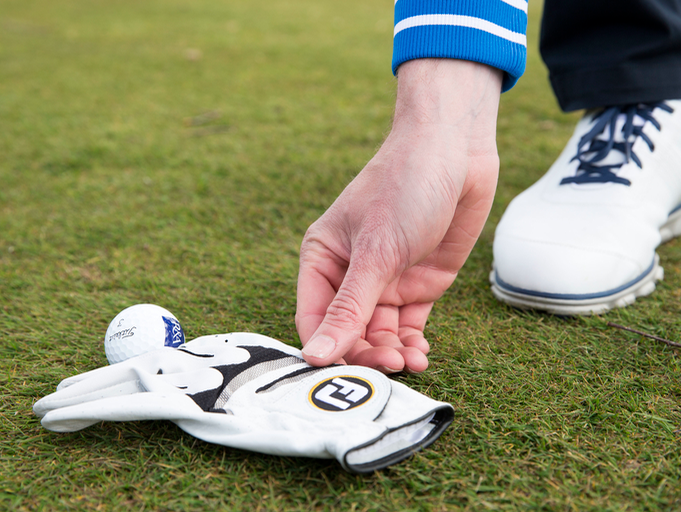Rules of Golf: ball on movable obstruction


It’s important to know the difference between a loose impediment and a movable obstruction as it will dictate whether or not relief is available
Under the Rules of Golf, there are important differences between loose impediments and movable obstructions, and it is the latter that we are concerned with in this video feature.
Without attempting to compile an exhaustive list, a loose impediment is essentially a natural object such as a leaf, twig, pine cone or stone, while a movable obstruction is anything man-made or artificial that can be easily moved without unreasonable effort.
On the golf course, this could include items that another golfer might have accidentally dropped, such as towels, gloves, scorecards, hats or other items of clothing, or other carelessly discarded items such as bottles, cans, sweet wrappers, boxes and so on.
If the object (or structure) cannot be easily moved with delaying play or causing damage, it would be classified an immovable obstruction, and different Rules would apply (Rule 16.1).
But it is movable obstructions we are concerned with here, and if you find your ball lying close to or against a movable obstruction, you may remove the obstruction under Rule 15.2a. If your ball moves as you do this, you may replace it without penalty, providing the movement of the ball is directly attributable to the removal of the obstruction.
By contrast, if your ball moves when attempting to remove a loose impediment, you would incur a one-stroke penalty and then also need to replace your ball, so you move loose impediments close to your ball at your own peril!
Get the Golf Monthly Newsletter
Subscribe to the Golf Monthly newsletter to stay up to date with all the latest tour news, equipment news, reviews, head-to-heads and buyer’s guides from our team of experienced experts.
However, if - as in this latest video from our Rules of Golf series produced in association with The R&A - your ball is actually lying in or on the movable obstruction, you may follow the slightly different procedure outlined later in Rule 15.2a.
This allows you to lift the ball, remove the obstruction, and then drop the ball as near as possible to the spot directly beneath where it lay in or on the obstruction but not nearer the hole. You may also clean your ball before dropping it under this Rule.
Equally, you may prefer to play it as it lies if the ball is lying particularly well on a towel or item of clothing!

Jeremy Ellwood has worked in the golf industry since 1993 and for Golf Monthly since 2002 when he started out as equipment editor. He is now a freelance journalist writing mainly for Golf Monthly. He is an expert on the Rules of Golf having qualified through an R&A course to become a golf referee. He is a senior panelist for Golf Monthly's Top 100 UK & Ireland Course Rankings and has played all of the Top 100 plus 91 of the Next 100, making him well-qualified when it comes to assessing and comparing our premier golf courses. He has now played 1,000 golf courses worldwide in 35 countries, from the humblest of nine-holers in the Scottish Highlands to the very grandest of international golf resorts. He reached the 1,000 mark on his 60th birthday in October 2023 on Vale do Lobo's Ocean course. Put him on a links course anywhere and he will be blissfully content.
Jezz can be contacted via Twitter - @JezzEllwoodGolf
Jeremy is currently playing...
Driver: Ping G425 LST 10.5˚ (draw setting), Mitsubishi Tensei AV Orange 55 S shaft
3 wood: Srixon ZX, EvenFlow Riptide 6.0 S 50g shaft
Hybrid: Ping G425 17˚, Mitsubishi Tensei CK Pro Orange 80 S shaft
Irons 3- to 8-iron: Ping i525, True Temper Dynamic Gold 105 R300 shafts
Irons 9-iron and PW: Honma TWorld TW747Vx, Nippon NS Pro regular shaft
Wedges: Ping Glide 4.0 50˚ and 54˚, 12˚ bounce, True Temper Dynamic Gold 105 R300 shafts
Putter: Kramski HPP 325
Ball: Any premium ball I can find in a charity shop or similar (or out on the course!)
-
 Meet The 8 Amateurs Playing In The Chevron Championship
Meet The 8 Amateurs Playing In The Chevron ChampionshipThe Chevron Championship includes eight amateurs – here are the details of the rising stars and how they reached the first women’s Major of the year
By Mike Hall
-
 How Much The Winning Caddie Earns At The RBC Heritage
How Much The Winning Caddie Earns At The RBC HeritageThe latest of the PGA Tour’s signature events offers a huge prize for the winner, and the caddie alongside the champion is due for a big payday too
By Mike Hall